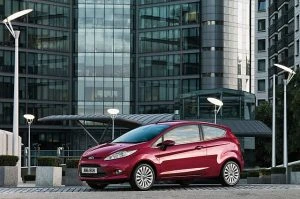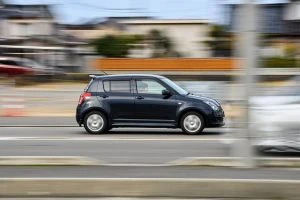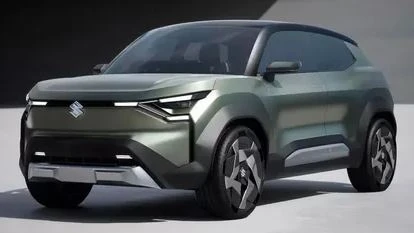Hatchbacks
The Two Most Important Things When Buying A New Car

There are various things to think about when we want to buy a new car. Most importantly, the thought of how much we can afford needs to be right up at the top of the list of things that we need to consider. Here are a couple of the main points we should be pondering and committing to before we sign any dotted lines on the sales document.
What’s The Top Price?
Our budget and what we can afford needs to be the first point that we get clear in our minds. Having a figure that we will stick to sets the price ceiling for us, and this is the figure we take with us around the car sales yards. Any cars over our price ceiling can be omitted from our shortlist. This makes the task even easier, so those vehicles up to the price ceiling are definitely the ones we can enjoy drooling over, learning about, test driving, and even buying as our next new vehicle. This is, of course, where Private Fleet can help you!

What’s The Purpose?
What are we wanting/needing the new vehicle for? Is it because we need more space for a growing family? Maybe we need a new vehicle because it will allow us to carry our elderly parents/in-laws about town or on vacations. It could be that our trusty ute or van that we use for work has finally run its last race, and we need a replacement… fast. Knowing our main purposes for the new vehicle gives us an indication of the type of vehicle and body style we should be looking at.
What I mean is that it won’t be any good getting ourselves a new Toyota Camry hybrid sedan when we will need to take Buster – our large, long coated, and rather boisterous dog – to the local obedience class. Especially not if Buster is accompanied by his brother. A Skoda Ocatvia wagon, a Toyota RAV4, or a Honda CR-V SUV with huge rear boot space would much better to suit our needs – and Buster’s. In this example, even a ute or 4×4 SUV might be the best option, particularly if you love heading down to the beach or heading away on an outdoor adventure in the Outback with Buster and the whole family.
Another example of a purchase fail is if you ended up with a light EV van when you also needed the vehicle to tow a trailer or to cover larger distances far from the urban boundary. Towing really drains that battery quickly, and there’s nothing worse than being caught miles away from the nearest charging station.
Maybe we just need a solo commuter to get us across town to the office for work. The distance to work takes us a total distance of 23 km per day, five days a week, and that’s all you want the new vehicle will do. If this was the case, an EV or hybrid could easily make it onto the list of ideal vehicles. In this case, these sorts of vehicles are ideal for keeping the cost of running right down and the emissions nice and low. Something like a BYD Dolphin or Audi eTron, both of which are EVs, or a hybrid BMW or Toyota could do the trick. It’s all about the price ceiling, however, and there is a big difference between the purchase price of a BYD and the BMW.
Maybe we could even consider a small hatchback for a city commute or even a sedan, both which have a small internal combustion engine (ICE) or a light hybrid powerplant that boasts very good economy ratings but don’t cost much to buy new. In this case, the constraints on our budget and the low price ceiling may point us more towards something like a Suzuki Swift, Kia Picanto or Honda Jazz.
As to how luxurious, expensive, or even exotic our new car may be does depend on our price ceiling. And the price ceiling is what we will have worked out already before heading out on the hunt for a new vehicle. Most manufacturers have a wide range within their model line-up; some more than others. For example, Ford has a base version of its 2024 Ford Everest SUV called the Ambiente that costs around $60k new at the time of writing, a more luxurious Trend ($65–75k), Sports models ($67–82k), and two top of the range Platinum versions stacked with luxury for $84–91k.
If we do our homework, there is no reason why we can’t buy a new vehicle that will be suitable for our needs, be fun to drive, and even be in the colour we want!

Hot Hatch Heaven

If I wanted to buy a hot hatch in 2024, what would the best ones be? A hot hatch is considered hot because it is a small hatchback with plenty of get up and go, handles fast cornering really well (and thus is a hoot to drive), and also offers decent practicality to double up as an errand runner or commuter when you’ve stopped being a rapscallion at the traffic lights.
Back in the eighties, the VW Golf GTi, Renault 5 GT, Mazda 323 Turbo, Toyota Corolla GTi, Fiat Uno Turbo, and the Peugeot 205 GTi were the hatchbacks to go for if you wanted a relatively cheap to buy and quick little car that brought you smiles for miles. In fact, these were the cars that caused people to call this type of car a hot hatchback in the first place; they are still considered legendary classics.
The nineties saw other car manufacturers getting into a slice of the popular hot hatch pie, so the Ford Escort RS Cosworth, Ford Fiesta RS Turbo, Nissan Pulsar GTi, Peugeot 306 GTi, Renault Clio Williams, Honda Civic Type R, Lancia Delta Integral, and Subaru WRX joined the gang.
The decade following the turn of the century cemented the Honda Type R, the VW Golf GTi, the Subaru WRX, the Renault Megane R26, and the Ford Focus RS as the hot hatch quickies.
Recently, 2010–2020 have seen the VW GTi, the Renault Megane RS Trophy, Ford’s Focus and Fiesta RS models, and the Honda Civic Type R dominating the hot hatch arena. But today, what’s there to carry the hot hatch name on? There are plenty of hatchbacks, in fact, that allow the hot hatch dream to live on.
In 2024, some of the best little hot hatchbacks you can buy are cars like the AWD Toyota Yaris GR, offering great value for money, bringing a neat little 3-cylinder 1.6-litre petrol turbo engine to the party with a slick shifting 6-speed manual gearbox, a 0-100 km/h sprint time of 5.4 seconds, and a top speed of 230 km/h.
For similar money, Hyundai offers a hot hatch, namely their front-wheel driven i30N in 2.0-litre petrol turbo form, capable of whipping the 0–100 km/h sprint in 5.4 seconds and running on to a top speed of 250 km/h. They don’t just stop with the i30N because you can also try the smaller and equally fun Hyundai i20N.
There is still a sparkling new VW Golf GTi with front wheel drive and169 kW available for you to buy, but you can also purchase the even quicker Golf R. This AWD package tweaks the Golf GTi’s engine even further to pack a 250-kW punch that can send you from zero to 100 km/h in 4.6 seconds.
If you are after the quickest petrol-powered hot hatch of 2024, then the intense Audi RS 3 takes the cake. The RS3 runs with a rather special 5-cylinder, 2.5-litre turbo performance engine and Quattro AWD to put all that power to the ground. A 3.8-second 0–100 km/h sprint time says enough.
Honda’s Civic Type R is still doing the business in 2024 and is a very nice bit of kit that handles really well, using a sweet 6-speed manual gearbox, a front-wheel-driven chassis, and a free-revving 2.0-litre petrol turbo motor to do the job. A 0–100 km/h sprint can be done in 5.4 seconds, but the car will also happily run right up to 275 km/h.

The 2024 Ford Fiesta ST is probably closest to the hot hatchbacks of old. The Fiesta ST is quick, well equipped, and has low running costs that help make it an affordable and great little daily driver.
Still some other fine petrol-powered hatchbacks for the hot hatch hunter include:
- Mercedes Benz AMG A45 (0-100 km/h, 4.4 seconds)
- BMW M135i (0-100 km/h, 4.6 seconds)
- Mini Hatch JCW (0-100 km/h, 6.0 seconds)
- Abarth 695 (0-100 km/h, 6.9 seconds)
- Cupra Leon (0-100 km/h, 5.7 seconds)
- Renault RS Trophy (0-100 km/h, 6.0 seconds)
EV hot hatchbacks:
- MG 4 XPower (0-100 km/h, 3.8 seconds)
- Cupra Born (0-100 km/h, 6.7 seconds)
- Abarth 500e (0-100 km/h, 7.0 seconds)
Of course, the decade’s not over yet, and I’m looking forward to seeing what the iconic hot hatches of the twenties will be.
New Suzuki Vehicles for 2024–2026

In the near future, Suzuki is looking to bring more hybrid technology into their mix of tricks. The current and soon to be available cars that Suzuki are delivering are exciting to look at, fun to drive, and are keeping pace with modern styling trends. Following Suzuki’s launch of the popular long-wheelbase (5-door) version of the boxy Jimny XL 4×4, Suzuki will be introducing at least another two new models in 2024. Hybrid technology is going to be part of Suzuki’s plan over the next year or two.
Despite the fact that CO2 gets pumped into horticultural green houses to enhance plant growth and production, hybrid vehicles will enable Australian new car buyers to enjoy genuinely fuel-efficient vehicles with low CO2 emissions for the first time. The fewer emissions, particularly of the toxic fume type that can cause respiratory problems, that get farted out into congested city environments the better, thus ensuring people can breathe easier as they leave the office to grab a coffee across the other side of the street or head around the block for a walk during lunch.
Suzuki’s lineup will continue to consist mainly of small cars and small SUVs (alongside Suzuki’s popular motorbikes, of course). There will continue to be the efficient petrol-only vehicles with their low emission rates; however, this year, mild-hybrid technology comes into effect. For those after a new car in 2024, Suzuki still offers buyers their brand-new Swift Hatchback. The 2024 Swift’s exterior looks familiar but is definitely smoother and sleeker than before and, inside the vehicle, there is bigger, more comprehensive touchscreen technology, along with an array of safety upgrades.
Of course, you could also buy yourself the fun little Suzuki Jimny 4×4 in three- or five-door form. These 4x4s are really popular, particularly for people needing a low-cost, go-anywhere type vehicle. These are truly capable 4WD SUVs that can happily tackle the toughest off-road terrain you can throw their way. The cute little Ignis, the dynamic Vitara range, and the stylish new S-Cross SUV are great efficient Suzuki vehicles that you can buy in 2024.

However, 2025/2026 will see Suzuki’s first electric vehicle (EV) model arrive in Australia: the Suzuki eVX. The small Suzuki EV SUV will be manufactured for numerous global markets, including Europe and Asia, with Australia’s introduction likely to be in 2025 or 2026. The Suzuki eVX concept was first revealed at Delhi’s Auto Show, India, in early 2023; it also received a public viewing at the Japan Mobility Show, Tokyo, in late October 2023. It is less than 4.5 metres long, about the same size as the recently facelifted Suzuki S-Cross SUV, and Suzuki suggests that the new eVX is targeting a 500 km driving range ahead of its launch. Equipped with dual electric motors, the Suzuki eVX is set-up well for delivering effective AWD traction should you require off-road action. Of course, Suzuki will also ensure it has fine on-road abilities as well. The eVX definitely looks futuristic and has that chunky, rugged look blended into the vehicle’s lines and shape.
Do City Cars Still Have a Future?
Australians have long had a love affair with SUVs, with most of us only too keen to head into the outdoors, particularly in these times where we can’t travel abroad. However, the SUV format hasn’t only just caught wind in Australia. In fact, it’s a global phenomenon that has been taking place in numerous locations, most notably in China and the US.
The SUV format has become so dominant down under, it is consistently making up around half of all new car sales each and every month. Passenger vehicles have all but fallen out of favour, with light commercial vehicles outranking them on a consistent basis. While the sedan is showing little sign of gaining traction, there is one segment that is faring even worse – the city car format.
As more and more manufacturers ditch the format, is it a dying breed?

Design and practicality take over
Of course, there are traditional SUVs that have drawn popularity for obvious reasons, but an emerging area in the car market has been new formats like crossovers and liftbacks, which have shaken up the design of cars as we knew them.
Offering levels of practicality and space that bring into question the versatility of the humble city car, these formats have taken off. Then you still have the traditional hatchback as well, which whilst on the slide, still has its niche position in the market.
With the trend clearly in place seeing more compact SUVs, crossovers and liftbacks developed in place of the city car, it’s hard to see this being overturned.
Furthermore, as urban sprawl takes us to destinations living further away from the city, Australians are more concerned with bigger cars that take care of all their needs. This contrasts with the likes of European cities where a compact car is important for smaller commutes in those tight and narrow laneways.
Locally, the humble city car hasn’t found traction among inner-city dwellers either, with an increasing number of young Aussies ditching car ownership altogether, instead opting for ridesharing services or peer-to-peer car rental services that certainly won’t be sufficient to ensure the survival of the city car format.
As each brand’s SUV line-up expands by the year, the writing is on the wall – city cars look likely to eventually fall by the wayside, even if that does become a drawn out affair…hopefully, it’s not before a select few manage to put up a fight and remind us what a shame it will be when they disappear for good.